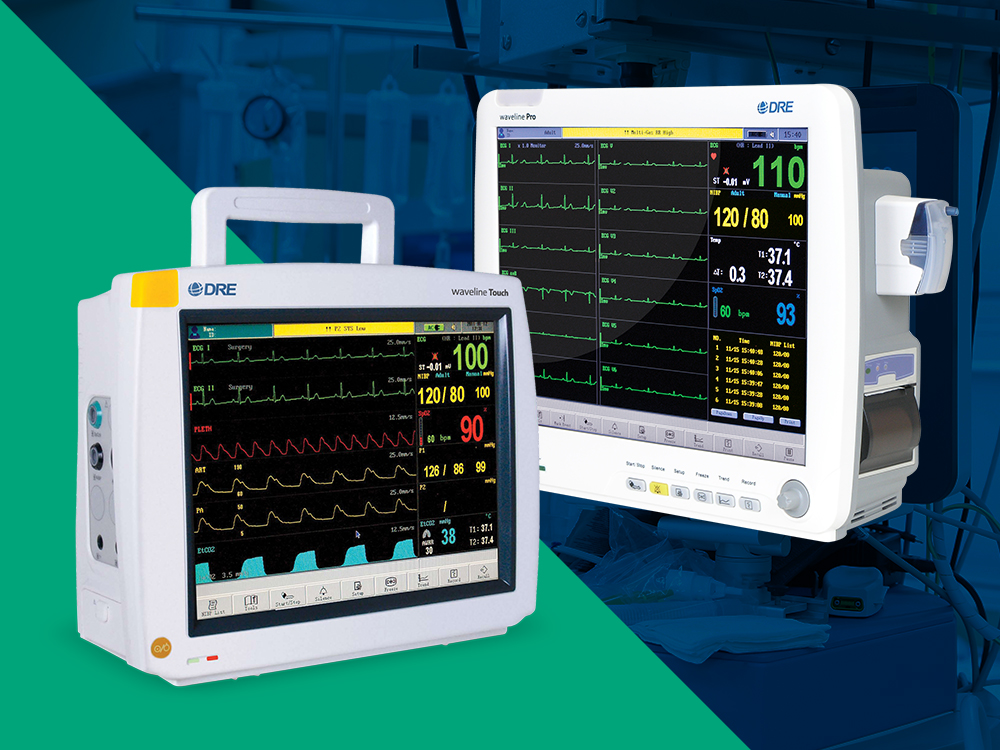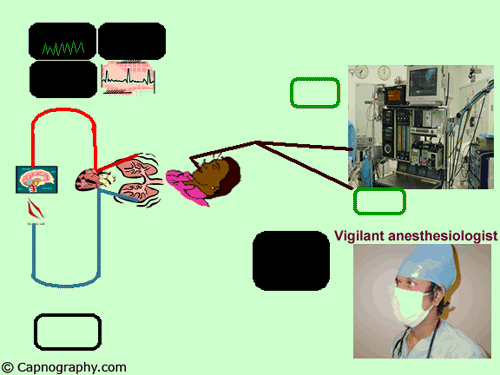end-tidal co2 monitoring standard of care
Where CO2 Monitoring Is Used Exhaled CO2 monitoring has been used as a standard of care in operating rooms for many years. Also called capnometry or capnography this noninvasive technique provides a breath-by-breath analysis and a continuous recording of ventilatory status.
Despite the majority of literature being case series expert opinion would suggest.

. Continuous assessment of correct endotra-. 24 The term capnometry refers to the. Changes in the shape of the capnogram are diagnostic of disease conditions while changes in end-tidal CO 2 EtCO 2 the maximum CO 2 concentration at the end of each tidal breath can be used to assess disease severity and response to treatment.
End-tidal carbon dioxide monitoring shall be performed continuously on all patients receiving general anesthesia. 11 End Tidal CO2 monitoring ETCO2 via waveform capnography should be used to confirming correct placement of the endotracheal tube andor measure the adequacy of ventilation 12 For patients in cardiac arrest end tidal CO2 is a useful adjunct to treatment 121 Note. CO2 monitors measure gas concentration or partial pressure using one of two configurations either.
In this study the aim was to review the applications of end-tidal carbon dioxide ETCO2 monitoring in emergency department multiple databases were comprehensively searched with combination of following keywords. End-tidal CO2 may be useful here as an easily and immediately measurable index of changes in cardiac output. In fact its commonly called the ventilation vital sign.
The 2010 House of Delegates of the American Society of Anesthesiologists ASA amended its Standards for Basic Anesthetic Monitoring to include mandatory exhaled end-tidal carbon dioxide E t CO 2 monitoring during both moderate and deep sedation to its existing requirement for endotracheal and laryngeal mask airway general anesthesia. End-tidal CO2 ETCO2 monitoring is not a new modality in the pediatric emergency department PED and emergency department. Venous return CO2 from tissue to heart.
ETCO2 emergency department monitoring and critical. However ETCO2 may be underused in the PED setting. End-tidal carbon dioxide ETco 2 monitoring provides valuable information about CO 2 production and clearance ventilation.
1 Although commonly used in intubated patients receiving mechanical ventilation this technique is sometimes used in non-intubated patients. Use of heart rate electrocardiography noninvasive and arterial blood pressure atrial pressure pulse oximetry and end-tidal carbon dioxide monitoring in the pediatric critical care unit is commonplace. This practice however is not supported by well-controlled clinical trials.
End-tidal carbon dioxide monitoring refers to the noninvasive measurement of exhaled carbon dioxide and is most useful when applied directly to patient care. End-tidal carbon dioxide ETCO 2 monitoring is the standard of care in the operating room for monitoring of ventilation and is the fastest known indicator for apnea respiratory depression and airway compromise. Pdf End Tidal Carbon Dioxide Etco2 Monitoring In The Post Anaesthesia Care Unit Pacu Douglas Mckendrick And.
Pulmonary blood flow CO2 from lungs to heart. In the current New Jersey Standards for Hospital Facilities with which hospitals must comply on pain of losing their licenses one finds the following in the section on anesthesia supplies and equipment. End-tidal co2 monitoring standard of care Sunday March 13 2022 Edit.
End-tidal carbon dioxide PETCO 2 monitoring is recommended as a basic standard of care and is helpful in adjusting mechanical ventilationGas solubility changes with temperature which might affect the PaCO 2 and thereby the gradient between Paco 2 and PETCO 2 PA-ETCO 2 under hypothermic conditionsWe investigated whether the PA-ETCO 2 changes during mild to. However end-tidal CO2 monitoring is helpful in measuring how the carbon dioxide is being used in the body. The Respiratory Care Department will initiate and maintain non-invasive monitoring of end-tidal CO2 as ordered by the physician in the intensive care ED and step-down units.
Waveform Capnography In The Intubated Patient Emcrit Project. Properly placed endotracheal tubes may become displaced due to movement of patients andor equipment. Pulse oximetry the standard of care in the ED prior to this study is known to have a 2- to 3-minute delay in detecting hypoxemia.
When capnography or capnometry is utilized the end tidal CO2 alarm shall be audible to the anesthesiologist or the anesthesia care team personnel When ventilation is controlled by a mechanical ventilator there shall be in continuous use a device that is capable of detecting disconnection of components of the breathing system. The nurses will initiate End Tidal CO2 monitoring via special nasal cannulas that are used with the pain pumps for narcotic administration. It is the standard of care during certain procedures such as intubations and sedations and can be used in variety of clinical situations.
End-tidal carbon dioxide detection is the most accurate technology to evaluate endotracheal tube posi-tion in patients who have adequate tissue perfusion. Capnograph is an indispensable tool for monitoring metabolic and respiratory function. With continuous technologic advancements EtCO 2 monitoring has become a key component in the advancement of patient safety within anesthesiology and the American Society of Anesthesiologists.
End tidal carbon dioxide monitoring is an important addition to oximetry for detecting respiratory depression Data in the literature does not support substituting oximetry for capnography when monitoring respiratory depression and some investigators have concluded it. After profound circulatory collapse the end tidal CO2. Ventilation effective movement of gas in and out of the lungs.
An increase in etCO2 by 5 appears to have reasonable sensitivity 71-91 and specificity 94-100 for fluid responsiveness in two studies of patients breathing passively on the ventilator. Defined as the monitoring of exhaled carbon dioxide through the respiratory cycle Measuring of End tidal CO2 is considered a standard of care for confirming endotracheal tube placement An important adjunct for assessing a critical patient The Journey of A Molecule Through the Respiratory Cycle. It became effective as of July.
Capnography is also the most reliable indicator that an endotracheal tube is placed in the trachea after intubation. Measurement of end-tidal CO2 therefore requires.

Pin On Non Invasive Blood Pressure Monitors

Masimo Rad 97 Pulse Co Oximeter Health Device Medical Design Medical Device

Pin By Shanghai Jaqi Medical On Multi Parameter Patient Monitor Medical Hospital Furniture Medical Equipment

Zoll R Series Defibrillator Available With Pacing End Tidal Co2 And More Interior Design Living Room Small Space Interior Design Interior Design Trends

A Systematic Approach To Capnography Waveforms Jems Ems Emergency Medical Services Training Paramedic Emt News

Standard Six Paremater Icu Monitor Ibp And Etco2 Optional Medical Medical Equipment Icu

Qube紧凑型床头监护仪 Spacelabs医疗保健 Health Care Assessment Tools Touch Screen Display

Hp Viridia 24ct Color Patient Monitor With Ecg Spo2 Press Nbp Modules M1205a Monitor Color Office Phone

Handheld Vital Signs Monitor Vital Signs Monitor Vital Signs Pulse Oximeter

Data Acquisition End Tidal Co2 Signal Etco2 And Resp Impedance From Download Scientific Diagram

Mindray Accutorr 7 Vital Signs Monitor Vital Signs Monitor Vital Signs Monitor

Capnography Vs Spo2 The Difference Could Be Life Changing

8inch Unique Design Patient Monitor Model Md908 Thermal Printer Unique Designs Design






